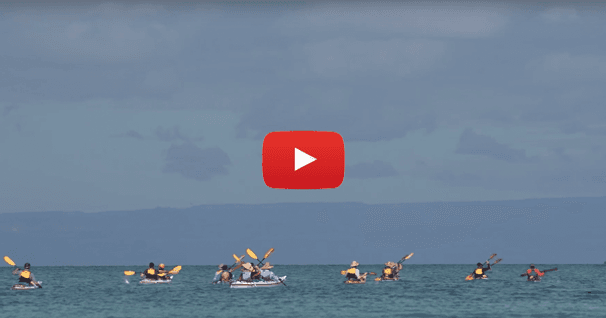Catching A Wave
Whether you're an experienced surfer, or a first time SUP out in the waves, you'll want to find a wave that is small, and away from any other surfers so that you may familiarize yourself with all the dynamics of catching and riding waves on a SUP.
First, study the spot that you intend to go out in. Know how far apart the sets are, know which way the currents are going, and if there's a channel to use to get back out. I highly recommend that you know all of this information prior to entering the water.
Once in the lineup, use the broken white water as a reference to where you want to be. Where the white water starts, you want to be approximately 10 to 30 yards further out than that white water as a general rule of thumb.
Once you've found your spot in the lineup, keep your eye on the horizon, and look for any dark spots approaching you. And no, I'm not talking about a shark... These dark spots are the lines of the waves that are approaching the reef, or the sands, depending upon where you are surfing. Those generally are the sets that you're looking for. Once they start to get closer, you can single one out that looks good to you.
Make sure you are pointed to the shore. As you paddle, your board will want to go either to the right or the left. You will need to switch from side to side as quickly as possible, so that you continue moving in straight toward the shore in order to catch the wave.
Just prior to dropping in on the wave, you want to make sure that you move your feet from a parallel stance to a surfing stance so that you have maximum control once you do catch the wave.
Related Articles
Whenever you're paddling, there's safety in numbers and so it's generally not a good idea to paddle…
River obstacles are serious hazards on any waterway - from placid, slow-moving streams to raging,…
Almost anyone can point their kayak straight down a class two, and even class three river, and paddle…



